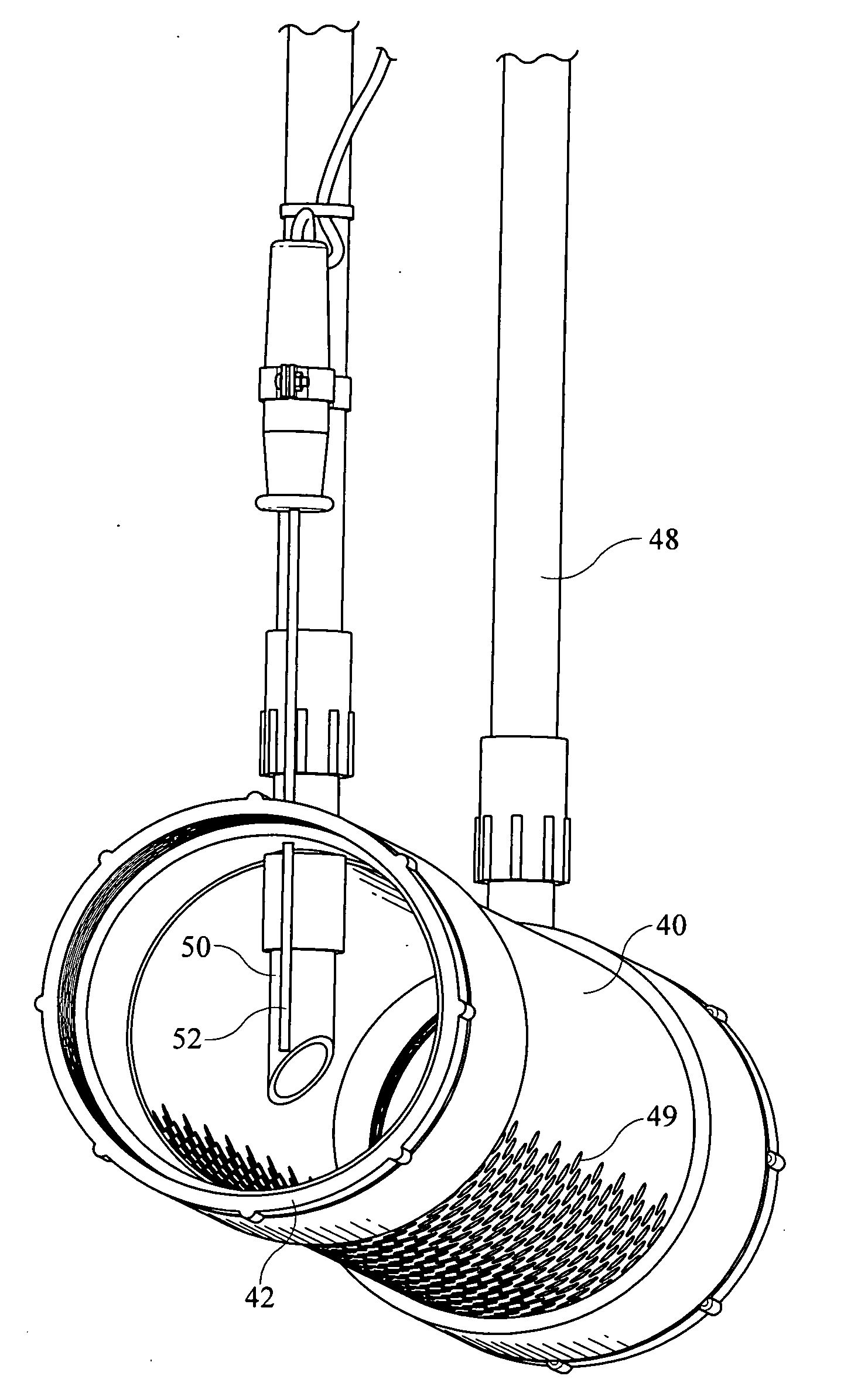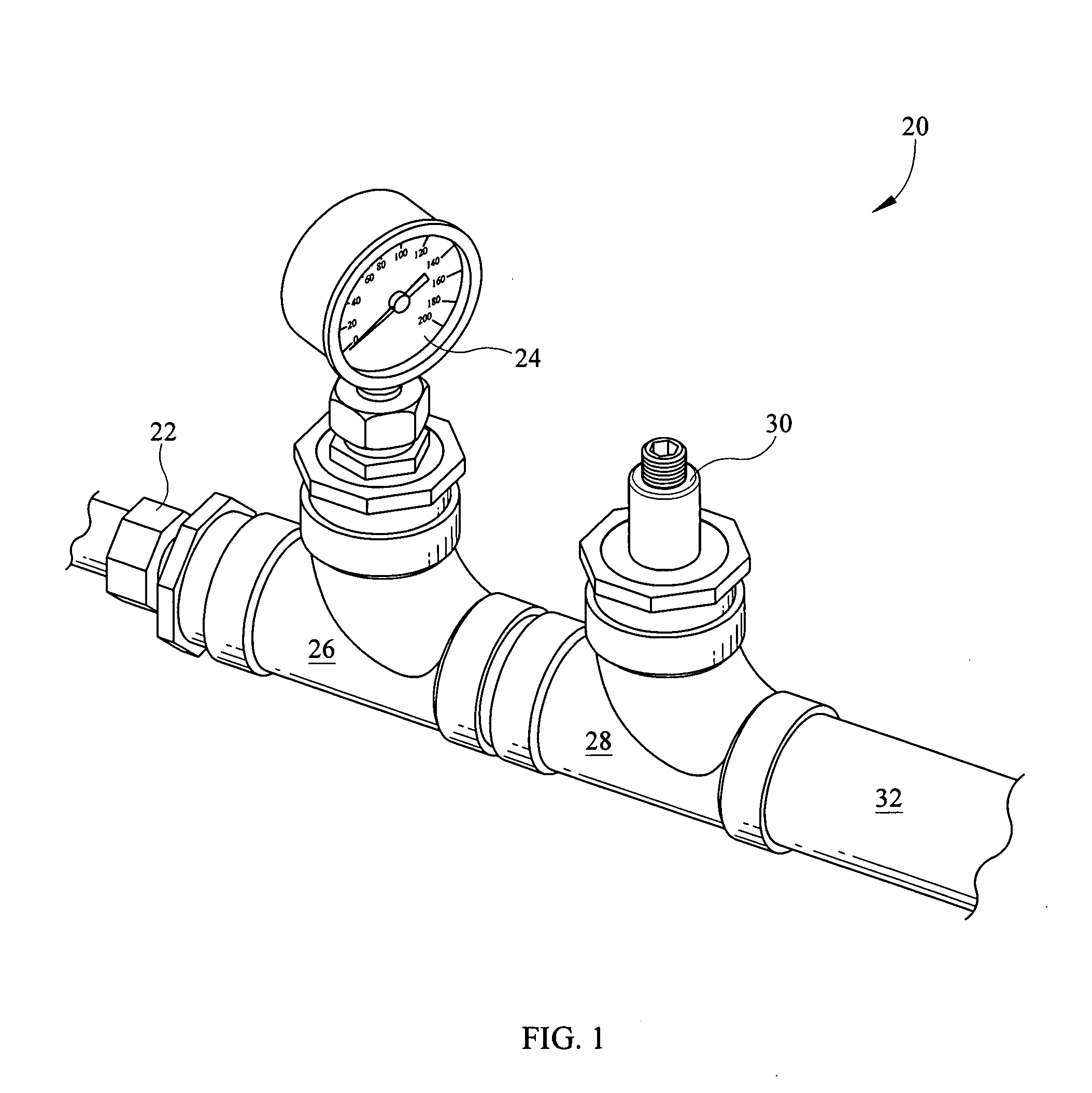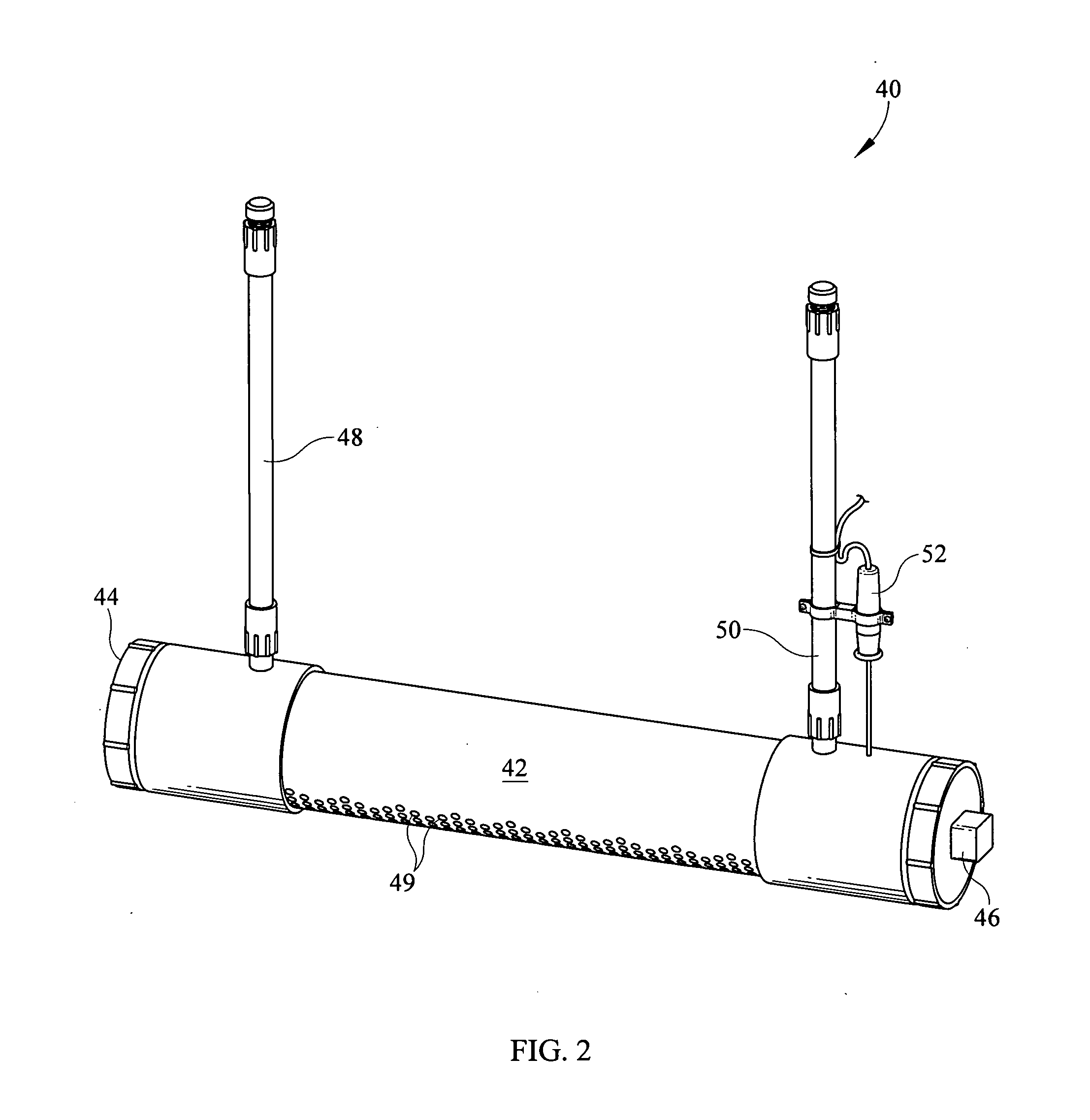[0007]The present invention relates to a method of facilitating reduction of greenhouse
gas emissions. More particularly, the present invention relates to a method of combining greenhouse gas with a surfactant and applying the combination to soil whereby at least a portion of the greenhouse gas is sequestered in the soil or
plant matter. The use of a basic surfactant buffers the acidity of the GHG or other gases mixed with the GHG. This buffering allows the GHG to be sequestered in soil without requiring the separation of acidic components or preventing
plant growth.
[0008]In one embodiment of the invention, stack gas, including one or more GHG, is combined with a surfactant. This combination is then applied to soil by subsurface injection. At least a portion of any
carbon dioxide in the stack gas is uptaken by plants in the soil. The remaining GHGs in the stack gas remain in the soil for a period of time. The stack gases are generally acidic and can negatively effect
plant growth by lowering the
soil pH. A basic surfactant is used, which buffers the acidity of the stack gas and renders the combination neutral in the soil. The uptake of any
carbon dioxide in the stack gas at the level of
plant roots or leaves will enhance
plant growth.
[0009]Studies have shown that some surfactants can increase the soil penetration of aqueous solutions. Surfactants increase the soil penetration of carbonated water by 15-85% depending on
soil characteristics. Penetration in fine particle clay soils may increase 15% whereas sandy soils may show an increased penetration of 85%. An additional
advantage of the use of surfactants is the decrease in
water use. An 85% increase in soil penetration slows
evaporation by approximately 50% due to the increased distance from the
soil surface diffusion point. Increased soil penetration will result in GHGs being retained in the soil for a longer period of time than a combination of GHG, water, and a non-surfactant buffer and will also allow more time for plants to uptake any carbon dioxide.
[0010]In some embodiments of the present invention, an
aqueous solution comprising surfactants that are effective in neutralizing acidity is combined with an acidic gas. This gas may by a GHG, a mixture of a non-acidic GHG with one or more acidic components to provide a mixture having elevated GHG levels. The concentration of available GHG (including as a solute, adsorbent, or gas) that is at least 50% greater, at least 100%, at least 200% greater, or at least 500% greater than would have resulted without providing a greenhouse gas source other than
ambient air. For example, the water may be combined with the greenhouse gas prior to, after, or during mixing of the water with the surfactant. If carbon dioxide is one of the greenhouse gases, the resulting solution may be carbonated sufficiently to provide generation of bubbles at
nucleation sites, or to at least comprise
carbonic acid or reaction products of
carbonic acid, such that the solution can deliver additional carbon to the plants. The surfactants may also be added to carbonated water or other carbonated liquids that have been or will be combined with GHG. Although most embodiments of this invention incorporate GHG, this invention is also suitable for using a basic surfactant to neutralize any acidic gas, GHG or non-GHG, before application of the combination of gas and surfactant to soil.
[0012]
Ethoxylation is a useful technique to obtain a bio-derived surfactant with a relatively high HLB value that is the product of a natural
fatty acid. This technique allows a chain of hydrophilic ethoxy groups to be readily added to the molecule. In
ethoxylation,
ethylene oxide is added to fatty acids, typically in the presence of
potassium hydroxide, resulting in the addition of multiple ethoxy groups to the acid.
[0016]More particularly, the present invention comprises a method for facilitating reduction in greenhouse
gas emissions wherein greenhouse gas in combination with a surfactant is applied to soil such that at least a portion of the greenhouse gas is sequestered by at least one of the soil and
plant matter growing in the soil. In a preferred embodiment, the greenhouse gas is acidic or is a component of a mixture of gases, one or more of which is acidic. In this embodiment, the surfactant is basic and effective in substantially neutralizing the acidity of the acidic gas or gases. In a preferred embodiment, the surfactant is an ethoxylated
fatty acid ester derived from plant oil, wherein the
fatty acid has a
carbon number of sixteen or greater, at least twenty ethoxy groups, and a HLB value of at least about six.
 Login to View More
Login to View More  Login to View More
Login to View More 


